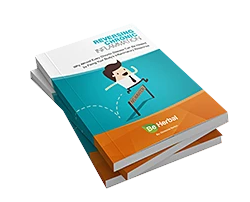When it comes to exercise, everyone seems to think that cardio and strength are it. Flexibility is simply a side effect of yoga. But the truth is, flexibility is just as important for health and well-being. In some ways, it may be even more important.
What is Flexibility?
Flexibility actually has two parts to it, although many people forget this! First, flexibility is about the range of movement that your joints can achieve. It also includes the mobility of the muscles surrounding your joints.
Flexibility can vary a lot throughout the body. Generally, you will have less flexibility around joints that have a lot of strain on them. This is because muscles will tighten and restrict the range of motion of surrounding joints.
You may also find that injured joints have poor flexibility. This is due to a combination of factors. Muscles will likely have tightened up to protect the joint. There will also be inflammation around the joint that restricts its movement.
People most commonly have poor flexibility in joints such as the vertebrae of the back and the hips. This is due to the tightness of muscles, such as the hamstrings and glutes.
Why Does it Matter?
For the average person, flexibility isn't really something that comes to mind. However, flexibility can be an excellent indicator of a healthy body and balanced exercise program.
Having sufficient flexibility may protect you from injuring yourself during other types of exercise. A lot of injuries occur due to tight muscles restricting movement.
Flexibility can also protect you from chronic pain issues. Many chronic pain conditions have poor flexibility as a contributing factor, if not a direct cause. By maintaining flexibility, you greatly reduce your chances of suffering from these conditions.
Flexibility is also key for maintaining posture and balance. This further protects from injury and pain, but also improves appearance. When we hold a good posture, we come across as more confident, and often will feelmore confident, too.
Flexibility may even aid you in your fitness goals, particularly when it comes to strength training. Greater flexibility means a better recovery from exercise sessions. It also means that your joints are able to take the greatest amount of weight safely, so you're more likely to reach weight-lifting goals.
Types of Stretching
When stretching, there are two types of stretches that you might consider including. These are known as static stretching and dynamic stretching. Both have their benefits and their downsides to consider.
Static stretches are when you stretch a joint to a comfortable range, and then hold for about 20 seconds. They are usually done joint by joint, such as quad stretches and chest stretches. Static stretches are best performed immediately after an exercise session. This is because the muscles are already warmed up and more able to reach a greater range of movement without injury.
Dynamic stretches are about continually moving the joint during the stretch until the end of the range is reached. Dynamic movements could include circling arms, neck or hips, slowly increasing the range with each circle. Dynamic stretching is ideal for utilizing prior to exercise, as it warms up the body and muscles and reduces the chance of injury.
How to Stretch Safely
So, we know that flexibility is awesome, and stretching is a good thing to add in. But like any type of exercise, there's a right way to go about it. Stretching improperly can cause injury, which is not what we want!
No matter what kind of stretch you're performing, the most important rule is to not push past your limit. There is a difference between a deep stretch and a sharp pain during a stretch. If you feel sharp pain, you've gone too far.
This goes for any flexibility classes, such as yoga, as well. The goal is to feel an effective deep stretch, not to injure yourself. Many people describe it as a deep sensation that isn't quite painful. Any sudden movements, jerking or sharp pains are to be avoided at all costs.
Other Factors in Flexibility
Although stretching is certainly a big component of how flexible we are, there are other factors at play. The main two to consider are your flexibility, nourishing nutrients and correct breathing.
While stretching, your breathing can make or break the stretch. If you are huffing and puffing, it means that your sympathetic nervous system is active. This system has its uses, but it's terrible for flexibility! It causes more tension, and you will struggle to relax into the stretch.
Instead, you want to focus on deep, long breaths that cause the belly to rise. This breath will switch the body to the parasympathetic nervous system, which is known as the 'rest and digest' system. This will allow your muscles to relax far more deeply, and deepen the stretch without risking your muscles and joints.
In the long term, you also want to be aware of the nutrients that foster flexibility. The master nutrient in this case is magnesium. Magnesium is the relaxation mineral, allowing your muscles to release tension.
Magnesium can be found in foods such as dark chocolate, leafy greens, nuts and seeds. You can also soak in an Epsom salt bath, or supplement orally or topically. Both athletes and beginners often find that using a spray-on magnesium can relax muscles quickly and effectively.
When Flexibility Goes Too Far
There is a small percentage of people who have one or more joints that are too flexible. This is known as hypermobility. Hypermobility can occur due to muscular imbalances, or it can be a sign of a connective tissue disease.
For these people, stretching their hypermobile joints can actually cause damage to the surrounding tissues. Muscles may become injured or even torn. For these people, most normal stretch routines could cause more harm than good.
If you have multiple joints that can stretch past a 'normal' range of movement, your best option is to consult a professional. Ideally, find a physiotherapist or osteopath who works with hypermobile clients. They will design an exercise program that protects your joints from damage.
References
http://citeseerx.ist.psu.edu/viewdoc/download?doi=10.1.1.525.2286&rep=rep1&type=pdf
https://eric.ed.gov/?id=ED448119
http://bjsm.bmj.com/content/34/1/29.short
http://onlinelibrary.wiley.com/doi/10.1111/j.1365-2648.2006.04102.x/full
http://onlinelibrary.wiley.com/doi/10.1111/j.1520-037X.2001.00542.x/full


